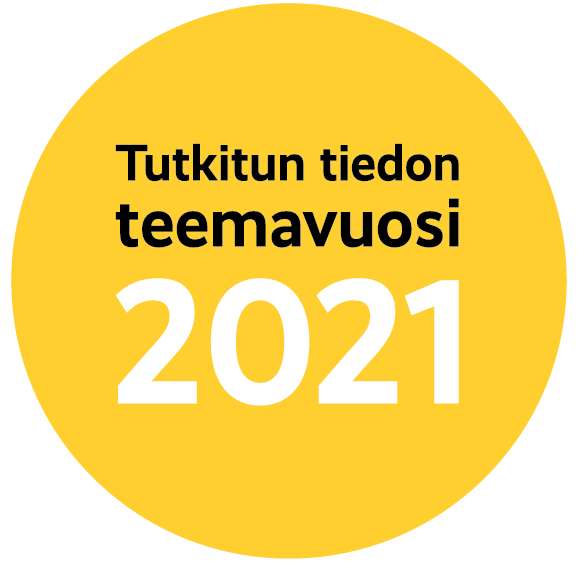A few words about neurodiversity in the arts and arts-education contexts
The arts education institutions and the Finnish cultural sector must be open to discussing the abled-bodies’ privileges by facilitating and supporting research and artistic processes that concern and are developed by invisibly disabled neurodiverse persons.

Neurodiversity is an activist movement and a paradigm that promotes the recognition of subjectivities with invisible disabilities. This includes anyone on the spectrum of autism, borderline personality disorder, and AHDH. By doing so, it aims to promote more societal equality.
It is urgent to disseminate that individuals perceive the world differently than the norm since society stigmatises non-normative behaviours. The neurodiversity paradigm assumes that invisibly disabled persons do not ‘lack’ any quality that needs to be fixed. Instead, they are the expression of the human biosocial variability. As a movement, neurodiversity grew in the nineties in the online autistic communities in the anglophone world. Neurodiversity is connected to the social model of disability, which understands that the oppression a disabled body suffers is not a problem to be solved. Instead, what needs to change is how society embraces and designs environments that fit these subjects.
Regarding physical disabilities, there are calls for developing a universal design. Buildings used to have stairs and no ramps because it was assumed that any individual could escalate stairs. However, not all human beings can climb stairs. That is not a defective quality but a sign of how human variability is manifested through diverse bodies. Therefore, we need buildings that facilitate the autonomy of any body. Invisible disabilities are hard to be detected by untrained eyes, but they need equal adaptations.
Since the policy-making organs and the media more difficultly visualise invisible disabilities, they are often backgrounded in the wellness guidelines of most art and arts education institutions. For some individuals in the spectrum of autism, being in a crowded space brings too much sensory stimulation–sounds, lights, and smells may overwhelm them. Other folks cannot concentrate for an extended period in long classes, and rarely these activities are subjected to flexibilisation. The requirements of engaging in eye contact, subtly enforced in social gatherings as classes and exhibitions, seen as a hint of mutual trust, may be highly uncomfortable for some folks who identify as neurodiverse.
But how is neurodiversity connected to higher education for the arts’ standards? Finland lacks proper recognition of individuals in the spectrum beyond the medical models of disability, which tend to pathologise the individuals and focus primarily on making them suitable for the working-life routine while not sufficiently promoting their wellbeing.
In practical terms, if we think about an art exhibition or a class in a university, a few tenets could be deployed with little effort: a) teachers typically require that their students present themselves to the class, an extremely uncomfortable situation for people in the spectrum of neurodiversity. This requirement should not be made mandatory; b) developing a plan to avoid sensory overload in museums and art exhibitions, as the Finnish Theatre Museum already did; c) staff training on neurodiverse-positive pedagogies.
There are many propagators of the neurodiversity culture in the online platforms. In Finland, one important example is Just Another Crip Group is a collective that focuses on the crip subjectivities. The project (Dis)Abling Institutions, being developed at the University of The Arts Helsinki and Aalto University, also focuses on promoting activities that aim to amplify the awareness towards invisible disabilities in the arts education sector. The Disability Studies and Arts Education online conference is another stance of dissemination of academic and artistic knowledge regarding invisible disabilities.
In sum, it is vital to clarify that ability and disability are not opposed, and no line separates them. Any approach to the invisible disabilities must also be intersectional since there are disparities in recognising their rights, benefits and diagnoses across different genders and ethnic groups. The healthcare approached invisibly disabled persons who are ethnic and gender minorities. Lastly, the arts education institutions and the Finnish cultural sector must be open to discussing the abled-bodies’ privileges by facilitating and supporting research and artistic processes that concern and are developed by invisibly disabled neurodiverse persons.
About the writer
Francisco Beltrame Trento is a postdoctoral researcher at CERADA at Uniarts Helsinki, where he is developing a project around neurodiversity and how to produce artistic and educational spaces open for neurodiverse subjectivities.
The year of research-based knowledge
This blog text is a part of a series of blog articles called ‘Research-based knowledge about art education’. The series is part of the Year of research-based knowledge.
Art makes a difference
Taidekasvatuksen tutkimusverkosto CERADAn blogista löydät verkoston uutiset, tapahtumat ja puheenvuorot. Verkoston tutkijat kirjoittavat taidekasvatuksen tutkimuksesta sekä taidealan korkea-asteen koulutuksen tutkimusperustaisesta kehittämisestä. Tutkimusverkosto on osa Taideyliopiston Tutkimusinstituuttia.
Research network CERADA’s blog offers news and views about how research into arts education can have an impact on society. CERADA researchers at Uniarts Helsinki blog about their work. The research network is part of Uniarts Helsinki Research Institute.
Latest posts
-
Not just "playing around" - the transformative power of early childhood music education
-
Call for participants: Societal engagement as part of studying in Sibelius Academy
-
Why Stories, Culture, and the Arts Matter for Health and Well-being
Follow blog